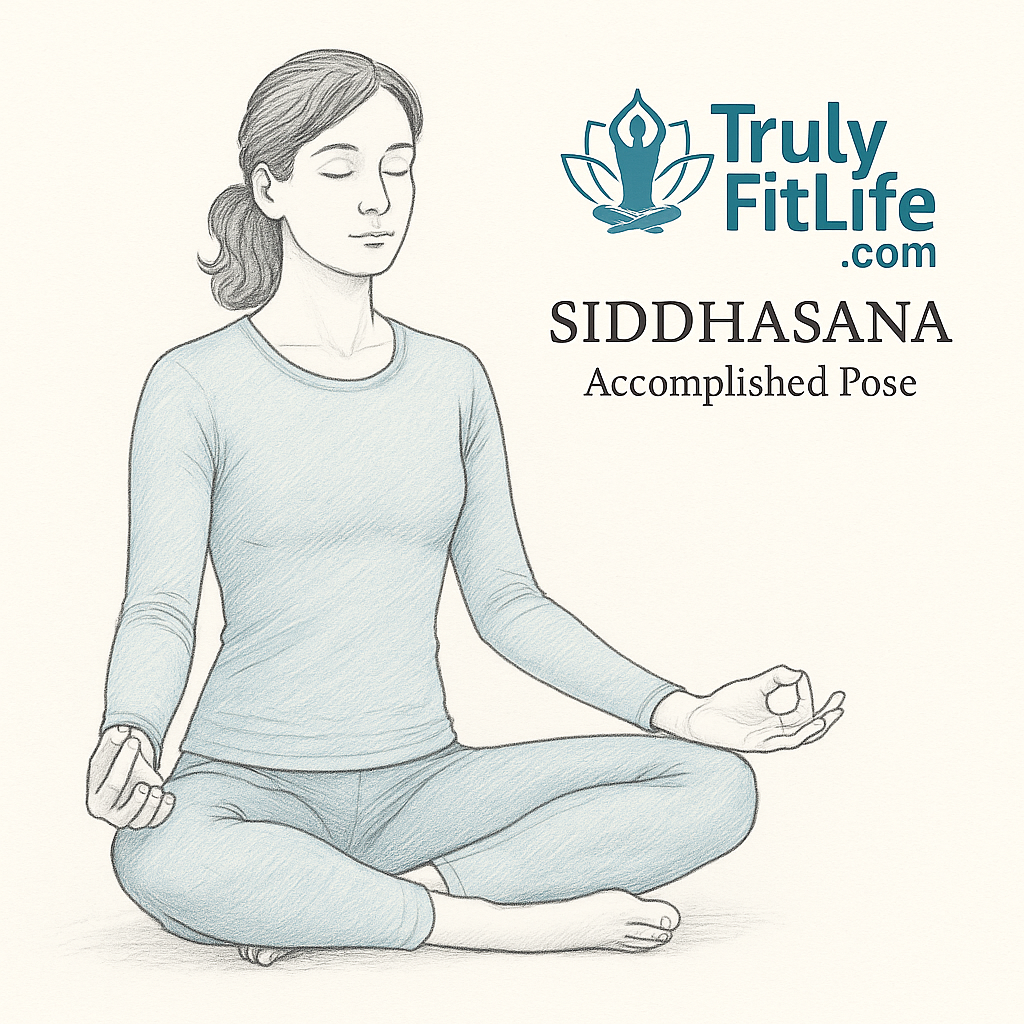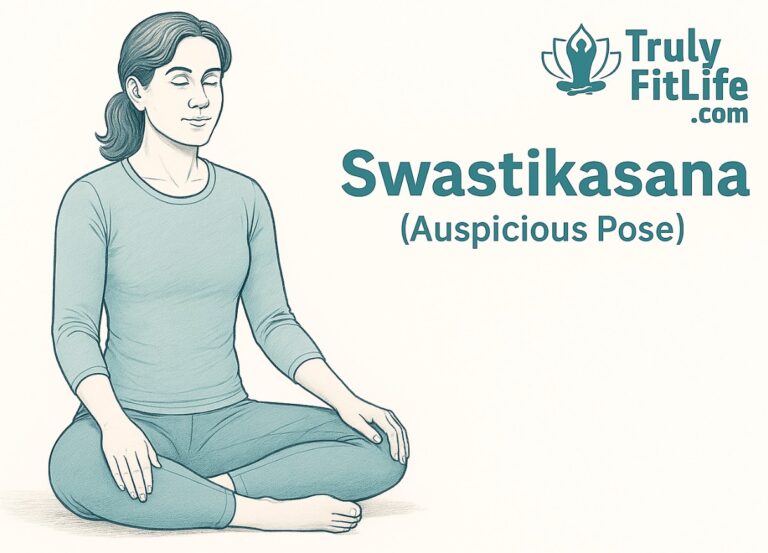
Siddhasana – Accomplished Pose is one of the most revered seated yoga postures, traditionally used for deep meditation and pranayama practices. Known in Sanskrit as Siddha (accomplished) and Asana (pose), it is said to channel energy through the spine, calm the mind, and prepare the body for spiritual awakening. Practicing this pose regularly improves posture, focus, and energy flow.
How to Do Siddhasana – Step-by-Step Instructions
1. Starting Position
- Sit on the floor or a yoga mat with legs extended forward (Dandasana).
2. Position the First Leg
- Bend your left knee and place the heel against the perineum (between genitals and anus).
3. Position the Second Leg
- Bend your right knee and place the heel directly above the left ankle, keeping it close to the pubic bone.
4. Align the Body
- Both knees should touch the floor comfortably.
- Keep the spine straight and shoulders relaxed.
5. Hand Placement
- Rest your hands on the knees in Jnana Mudra (palms facing up, thumb and index finger touching).
6. Breathing & Focus
- Close your eyes, breathe deeply, and keep your attention on the breath or between the eyebrows (Bhrumadhya Drishti).
7. Duration
- Hold the pose for 1–5 minutes, gradually increasing with practice.
Health Benefits of Siddhasana
- Supports Meditation & Pranayama – Creates a stable base for long meditative sessions.
- Improves Posture – Encourages an upright, aligned spine.
- Stimulates Energy Centers – Activates Muladhara and Ajna chakras.
- Calms the Nervous System – Reduces anxiety and mental restlessness.
- Opens the Hips – Increases flexibility in the hip and groin region.
Muscles and Body Parts Involved
- Primary Muscles: Hip flexors, glutes, adductors.
- Secondary Muscles: Spinal extensors, core stabilizers.
- Joints: Hips, knees, ankles.
Chakras Activated
- Muladhara Chakra (Root) – Stability, grounding.
- Ajna Chakra (Third Eye) – Concentration, intuition.
Drishti (Gaze Point)
- Bhrumadhya Drishti – Focus between the eyebrows.
Modifications & Variations
- Beginners: Sit on a folded blanket to reduce knee strain.
- Tight Hips: Keep one leg slightly forward or use cushions under knees.
- Advanced Variation: Padmasiddhasana – combining Siddhasana with Padmasana elements.
Contraindications & Precautions
- Avoid if you have recent knee, hip, or ankle injuries.
- Do not force knees down; allow gradual opening of hips.
- Pregnant practitioners should consult a yoga expert before attempting.
Practice Tips
- Best practiced during early morning or before meditation sessions.
- Maintain a neutral pelvis to prevent lower back strain.
- Pair with gentle hip-opening stretches for preparation.

